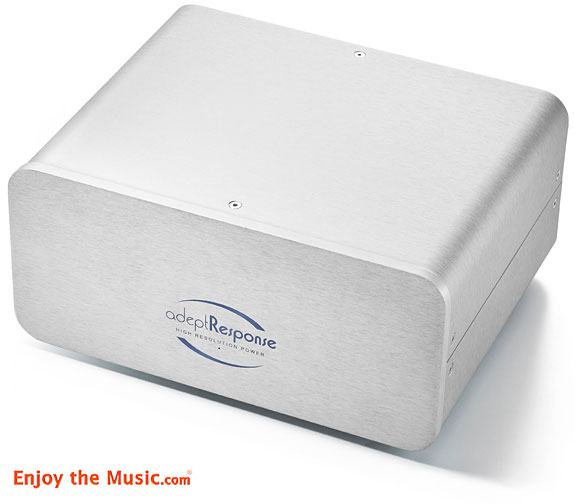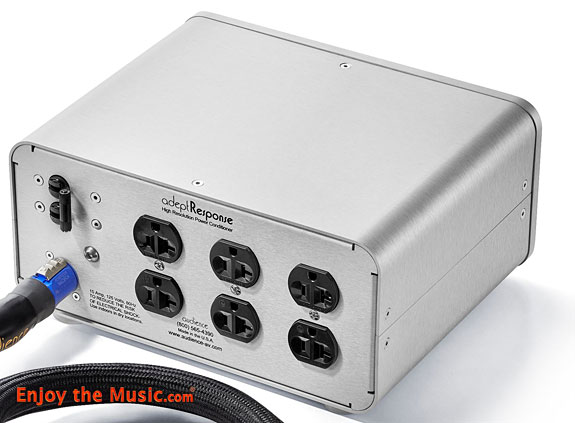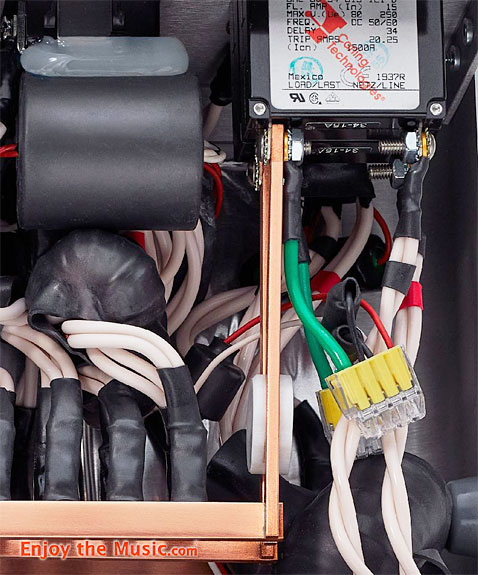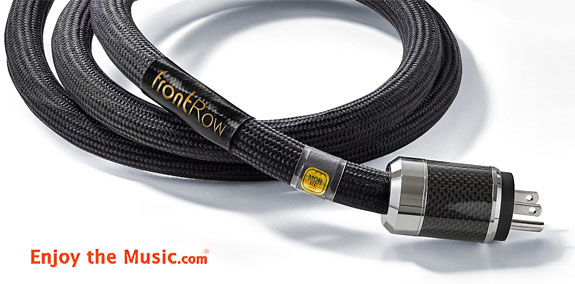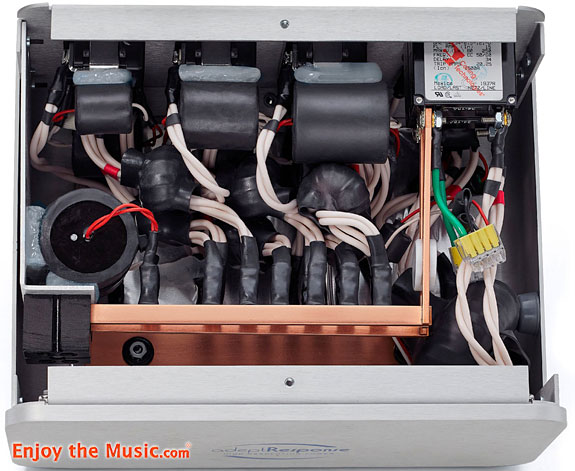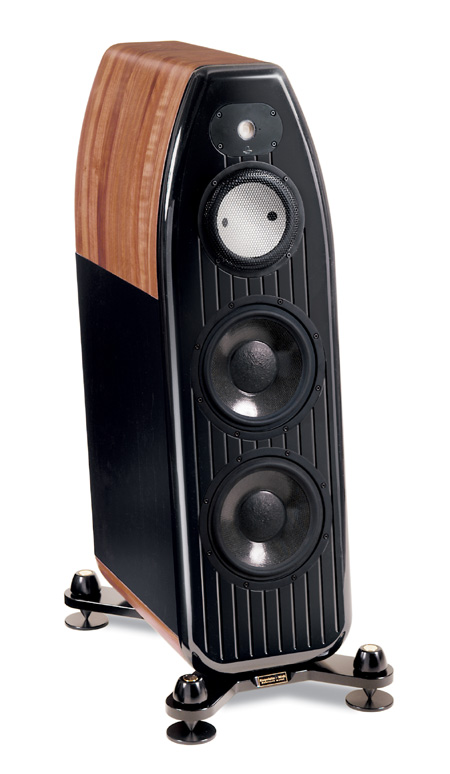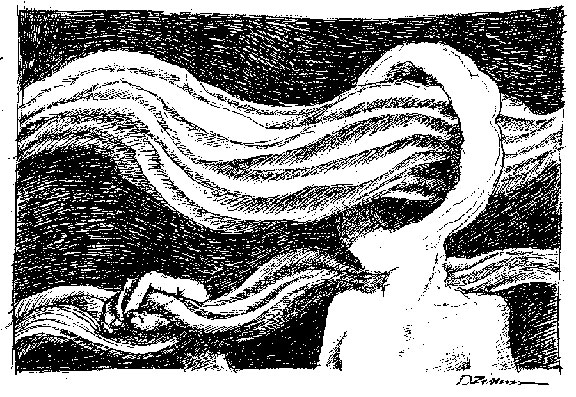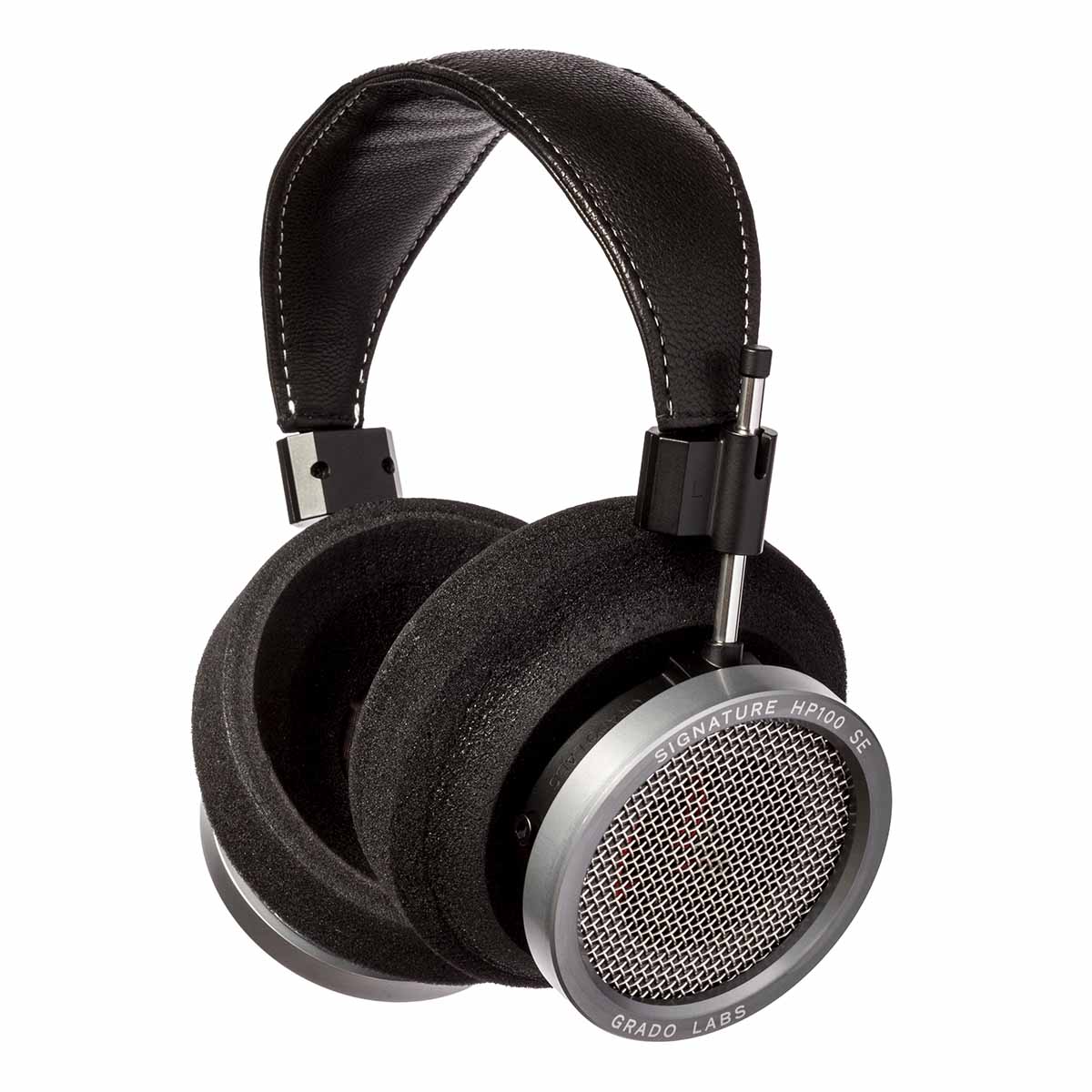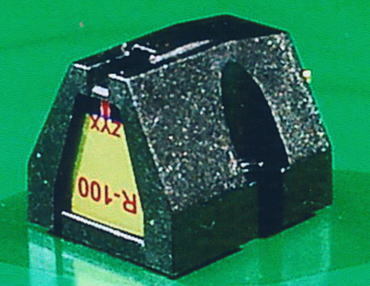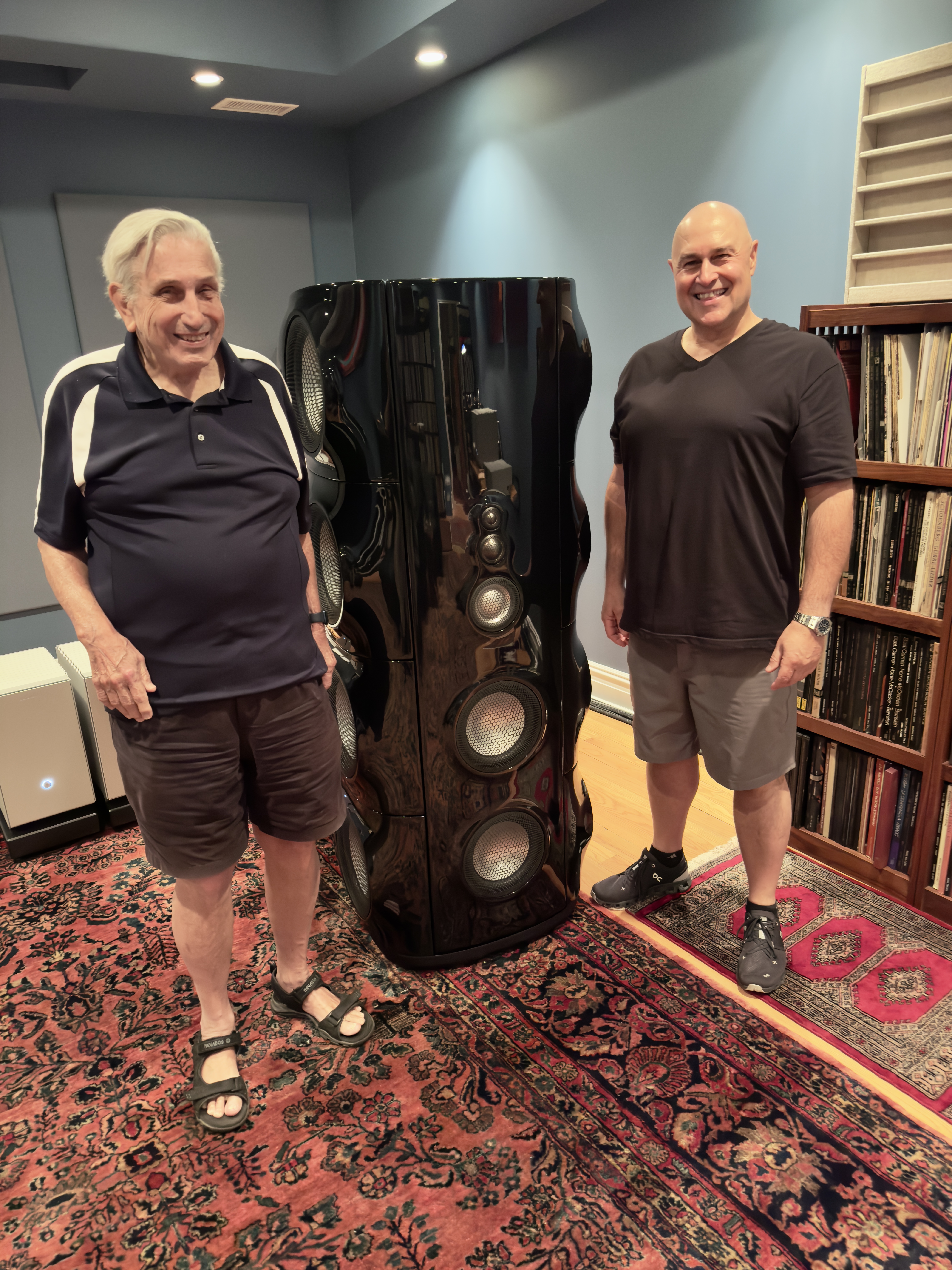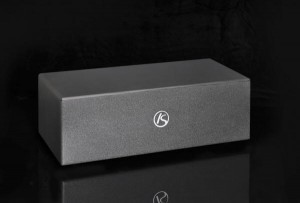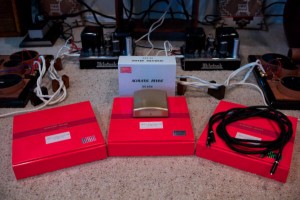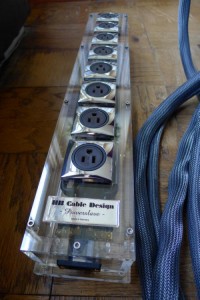With Audience's frontRow powerChord. Reacquaint yourself with the art of deep listening.
With this article, Positive Feedback continues its content-sharing relationship with Enjoy the Music Dr. Michael Bump shares his thoughts on the Audience adeptResponse aR6-T4 Passive Power Conditioner and the frontRow powerChord.
Dr. David W. Robinson, Editor-in-Chief
I recently came across an article written in early March 2020 by LA Times Staff Writer, Randall Roberts. The write-up, entitled, The Lost Art of Deep Listening: Choose an album. Lose the phone. Close your eyes, is offered as a challenge (to those who are otherwise not of an audiophile persuasion) to listen with all manner of intent as if binge-watching all seven seasons of Sons of Anarchy (which I admittedly have done now on three occasions). The assignment: Clear your schedule for the next three hours of all distractions. Choose three full recordings from your collection and put them in an ordered queue (as if you were programming a triple feature binge-watch). Then, close your eyes, and just listen. Roberts reflects, "There was a time when listeners treated the mere existence of recorded sound like a miracle—a wonder, a kind of time travel. Vintage images from the space age, recalling couples seated around their high-fidelity systems as if being warmed by a fireplace."
From her book, Deep Listening: A Composer's Sound Practice, the late electronic music composer / performer / educator, Pauline Oliveros, coined the phrase "deep listening" for just this practice. She writes, "I differentiate to hear and to listen. To hear is the physical means that enables perception. To listen is to give attention to what is perceived both acoustically and psychologically." Directing attention toward auditory perception can transform the overlooked into an aesthetic experience. One need only reference John Cage's infamous 4'33" to recognize this fact.
If we are to trust our ears, then it behooves us to learn to listen. As audiophiles, we know what this means. Certainly, as a professional musician and audio reviewer, I've honed these skills to a necessary art. It comes from years of subjective conditioning within the aesthetic of music, the creation and performance of music. As Roberts highlights, musicians often spend a lifetime creating their art, while documenting their efforts via recordings. They struggle over the oft-elusive minutia of form, syllables, melodies, bridges, and rhythms reaching beyond what is assumed in search of a voice not yet expressed. All this is in hopes of documenting a moment in time for eternity to ponder and enjoy. It would seem the least we could do is respond with some respect, pausing and listening to what they have to say.
Yes, easier said than done in this day in age. I acknowledge the sensorial overload that is our present modus operandi. Multi-tasking within our daily lives, managing the challenge of dozens of simultaneous stimuli towards the completion of scheduled agendas, suggests the luxury of "deep listening" is an artifact of a bygone era, overshadowed by the information saturation of present-day lifestyles. The saying, "It is complicated," has never been truer.
And yet, audiophiles continue to walk the planet, their appreciation of "deep listening" not only persistent but flourishing. The heartbeat, interest, and quest for high-art audio playback equipment appears healthy, no better demonstrated than in these quarantined-restricted, socially-distanced Pandemic lifestyles we have come to know. A new era of introspection has compelled us to, in fact, step back a bit and just listen. A refreshed awareness of our vulnerabilities suggests that, perhaps, deep listening isn't a lost or even exclusive art, but open to anyone who wishes to participate. Perhaps, these beautiful machines of music reproduction to which we turn for emotional solace and refuge have never been more significant in life.
To this end, I continue to enjoy balancing my congruent professional and personal paths of musical creativity and listening. To the latter, the absence of live performance and guest artist-masterclass opportunities over the past year has provided more home time to re-evaluate our audio reference system. Like many in this hobby, I initially had subscribed to the thought that building a quality audio system is principally dependent upon the synergy between speakers and amplifier, with speakers being the defining piece. Possibly true. However, continued experience and deeper experimentation have given me pause to acknowledge the simple truth that successful audio synergy indeed begins at the source—electrical power.
Without optimizing the juice which influences everything, all else is like herding cats. Get it right at the foundation, and the rest can be more accurately assessed. I recognize that prerequisites to achieving this likely include a well-financed audiophile with a dedicated power generating station upstream from their home, corresponding dedicated lines, circuit panels, etc. Yeah, right. Removing this hypothesis from the equation, let us then assume our conversation begins at the wall. Now, what to do with all that dirty power?
Portal To "Deep Listening"
For me, it makes sense to build from the wall-out / ground-up, beginning with power processing, conditioning, and amplification. No front-end source or subsequent transducers will work their best if not provided the best possible energy with which to fuel them. To this end, providing clean, unreserved electric power without the risk of surge, spikes, grunge, or low line voltage is fundamental to high-end musical reproduction. I posit, in fact, that power conditioning is not an afterthought in the food chain, but an essential, if not core resource within your audio system. As quoted from Ed Morawski in his '03 Positive Feedback review of the Equi-Tech ET 1.5Q Balanced Power Conditioner:
"Power conditioning has the potential to provide the biggest improvement in your audio system's sound than any other upgrade. It also may easily be the absolute most bang for the buck, since most high-end power conditioners sell for less than the cost of an audiophile-grade CD player."
To this end, I've experimented with various power conditioners through the years, at various stages of system flux and growth, with the intent of building "up" from clean / full power. Throughout the journey, I've remained vigilant to the listening goal of "doing no harm" to the recorded source within the audio chain.
In Search Of An Audience
Indeed, "Music First / Do No Harm" is the primary design philosophy of the Audience design team, led by company President and CEO, John McDonald. John is no stranger to the fine art of audio design, and one of the most respected leaders in the industry. Above all else, my brief acquaintance has found him to be a genuine and wonderful human being. As both an innovative audio designer and businessman, John established Audience in 1997, along with fellow forward-thinking partners, Richard Smith and Roger Sheker, whose objective was to "build the finest possible high-performance audio components." A second take, Audience was an outgrowth of an earlier business venture (Sidereal Akustic Audio Systems, Inc.) with a partner, Richard Smith. Initially, both companies were established with the intent of developing loudspeakers, but found their paths through developing capacitors.
Today, Audience is postured as a trailblazing and versatile designer of a variety of audio components, including cabling (interconnects, power cords, associated accessories), power conditioners (adeptResponse, forte V8 Power bar), AC receptacles, single driver reference monitors (The One and 1+1), as well as the long-standing line of capacitors (Auricap XO) and other OEM/DIY parts. Through the years, Audience audio products have earned numerous awards for their significant advances in high-end audio. Their current product offerings represent some of the most respected and sought-after designs in high-end audio.
Enter Audience'a adeptResponse aR6-T4 Power Conditioner and frontRowpowerChord
The Audience adeptResponse aR6-T4 Power Conditioner and accompanying frontRow powerChord (kudos to the clever branding) represent the top shelf of Audience technology. Introduced in 2005, the current adeptResponse series is offered in 2, 6, and 12 outlet configurations. Specific to the T4 (4th generation) is the incorporation of several superb design improvements, most notable being the Aura-TR Teflon Capacitors, providing a substantially more resolute, more dynamic, and more distinct soundstage than previous adeptResponse iterations. Also unique to the T4 are Audience's Hidden Treasure High Definition AC (HDAC) duplex outlets (which, through proprietary treatments, effectively eliminate EFI and RFI, providing greater signal preservation and ultimately allowing for increased clarity and resolution), as well as Au24 SX OCC internal power wiring throughout.
Several additional significant features include the use of a magnetic circuit breaker serving as the unit's power switch, each outlet fully filtered with additional double-filtering between each outlet, cryogenic treatment of the complete circuitry, and a proprietary Extreme High Voltage process (EHVP) utilizing a powerful Tesla Coil applying nearly 1 million volts at specific pulse modulations, frequencies, and amplitudes to the internal components, the results being a notably more transparent and dynamic sound with improved staging.
When presented with options, I asked John if he might also send along the Audience frontRow series powerChord, just so I might fully appreciate the ride the aR6-T4 can offer (It should be noted that you can only pair the aR6-T4 with an Audience power cable. Both cable and receptacle are fitted with a Neutrik-style termination mount located at the rear of the aR6). Effective marketing perhaps, but the synergistic intent and sonic congruency through design are inescapable (not to mention rock-solid connectivity). The frontRow powerChord represents a crowning achievement in providing clean, unreserved power, and a logical companion to the top-shelf features of the aR6-T4. Quoting John:
"Audience makes two versions of powerChords in the frontRow line. The standard is a 10 AWG high current model that is adequate for any audio component of 150 watts or greater. For components with less than 150 watts, like preamps, disc players, DACs and the like, there is a 13 AWG "MP" medium power version. In my personal experience, the MP version always sounds better than the heavier 10 gauge design in lower power components."
Without a full loom, I acknowledge that the installation of a singular frontRow power cord in this particular position, though significant, only offers a seasoning of the synergistic potential of Audience cabling throughout the entire system (In particular, the branching of additional frontRow powerChords to the power plant and sources). At some point in the not-so-distant-future, I look forward to assessing the Audience frontRow experience on a more complete scale. I can confirm that, in partnership with my reference loom of JPS Aluminata cabling, the sonic improvements provided by the singular frontRow pc were both immediate and significant.
Central to design within both the aR6-T4 power conditioner and frontRow powerChord is the demonstrated R&D of their patented MORRE technology (Musically Optimized Reduction of Resistive Energy). Essentially, MORRE is the pursuit of increased signal integrity through research and application in purpose-specific ways—from improved conductive materials, dielectrics, connectivity, resistance, capacitance, and inductance, resonant frequency damping, overall cable geometries, to post-production—all with the goal of representing the highest degree of accurate signal transfer with the lowest degree of unwanted distortions and interference. At its core, MORRE technology speaks to the very essence of Audience's ambition and success in placing the uninhibited signal of musical reproduction ahead of all other objectives and experiences.
("Deep") Listening
To date, there are certainly several well-written and informative reviews which break down in great detail the adeptResponse power conditioner and frontRow powerChord designs and technical features, from which I have personally learned much, as will other informed readers. For your consideration, I will detour from these narratives and descriptions in favor of personal reaction to a few of my tried and true listening references and the sonic attributes these audio pieces have introduced to my audio system:
Richard Strauss, Burleske for Piano and Orchestra. Philharmonia Orchestra, Ian Hobson, Pno, Norman del Mar, Conductor (CD/Arabesque)
Having had the privilege of performing with inspiring orchestras throughout my career, I particularly enjoy those opportunities when Richard Strauss is on the program. He (alongside Mahler, Nielsen, Stravinsky, Bartok, et al) was among late 19th / early 20th century composers who dared explore the sonic potential of the timpani voice in orchestral composition. To be sure, the 2nd Industrial Revolution and more formalized schools of performance pedagogy ran congruent with design experiments and expansion of the instrument's mechanical capabilities, garnering the attention of daring composers and willing performers. Strauss', Burleske in d minor for Piano and Orchestra (1886), is an early work in the composer's opus, already shining a light on the budding composer's willingness to give more than perfunctory courtesy to timpani orchestration. Such soloistic and melodic treatment had rarely been granted (lest the Austrian concerti experiments of Druschetsky, Fisher, Graupner, et al, of the late 18th century).
For many years, I've remained an ardent admirer of Ian Hobson's piano artistry. Some years ago, I had the pleasure of doing a series of performances with him of the Bartok, Sonata for Two Pianos and Percussion (alongside Alexander DeGrado, piano, Eugene Novotney, percussion), as well as working under his baton on a few occasions with the Sinfonia de Camera in Illinois. He is an impeccable and demanding artist, who continually inspired me with his performances. On this particular recording, Hobson's interpretation of the Burleske leaves no stone unturned. His crystal clear technical execution of this virtuosic tour de force for piano is only surpassed by his graceful ease of line and shape. From the opening solo dialogue, timpani and piano engage in a closely-woven relationship that forms the backbone of this masterful showcase.
Due to its complexity and delicacy, it is an orchestral work few recordings have done justice to. The Arabesque recording continues to be my go-to, both for interpretation as well as fidelity. Knowing this work and recording as well as I do, I was taken aback by the transformation it experienced with the Audience aR6-T4 / frontRow combo in place. So much expansion of stage—vertically, horizontally, as well as depth. Transient speed across the frequency spectrum significantly and realistically improved. The tactile sense of performance came to me clearly, feeling actuation, vibration, and control in real-time. Communication between performers, conductor, and the audience was palpable in a manner not previously experienced.
Clarity (not just transient) helped bring further forward realistic spatial characteristics of both the instrumental sources as well as the venue. Of particular interest was the presence of the venue and its reflection of ambiance to the recording. Subtleties modestly apparent without the Audience pieces were now beautifully present, extending their contributions to the total listening experience in ways previously unheard.
Herbie Hancock, River: The Joni Letters (Verve 180 gram Vinyl)
I originally acquired this recording in CD format shortly after it was released in 2007 (In addition to the recent 180g vinyl release, there is also a 10th Anniversary / Deluxe Edition CD as well as a 96 kHz/24-bit stream). Being a lover of Joni's continuous breath of fresh air, one ignoring the genre boundaries between folk, pop, and jazz, I found an instant attraction to Herbie Hancock's tribute project, weaving through/to/around genres in its unique way, gathering a brilliant collection of vocal colors and stylistic renditions for some of Joni's most celebrated songs. Indeed, I hear this recording project as a love letter from Herbie to Joni, swooning over the musical freedom that her music has represented, installing new and fresh visions that would appeal to so many.
It's no surprise that the project won "Best Album" at the 2007 Grammys and reached #5 on the Billboard charts. I mean, what's not to love from the diversity represented through featured artists such as Luciana Souza, Tina Turner, Norah Jones, and the guest of honor herself, Joni Mitchell? In my opinion, River: The Joni Letters is one of Herbie Hancock's crown jewels. A masterfully-woven musical exploration of an iconic poet-artist, applying fresh and uniquely creative fonts from fellow poet-artists.
This reference has always proven to be one of my favorite low-amplitude listening pleasures. Late-night, low-light, a glass of red wine, you get the picture. It will reveal the level of frequency, image, stage, and transient consistency a fine audio system is capable of presenting across all amplitudes, beginning at the quietest. While reviewing various fine audio pieces, I always listen (deeply) for that threshold when the artist(s) first enter and accurately place themselves in my listening room. From here, it is then left to ascertain the visceralness of that presence—the PRAT of their being. In its current guise, I've come to smile at my system's ability to reveal the various performances on this recording, assuming it was at its best, given the resources. Was I ever wrong!
With the aR6-T4 / frontRow combo in place, a far lower threshold was instantly achieved—one revealing a whole new level of transient clarity, timbral tangibility, firm, realistic lower frequencies, and imaging the likes of which I had not previously experienced in my system. Most importantly, and perhaps more than with any other listening example, the Audience combo provided wonderful flow to the wide variety of timbral blends that make this recording so attractive and unique. Source placement and realism were other sonic characteristics that had simply not revealed themselves prior, and solely credited to the Audience combo's presence.
Brenda Navarrete, Mi Mundo. (CD/Alma)
This debut solo project from contemporary Cuban singer / percussionist (bata virtuoso), Brenda Navarrete, surely should be in every audiophile's listening arsenal. The corporeal transients within this percussive party are pure joy, only equaled by the gripping quartal vocal harmonies that move through time symbiotically—a singular organism of musical life. Navarrete's eclectic amalgam of traditional Cuban dance style, smooth jazz, and a dash of pop, make this recording difficult to categorize, inviting the listener to many parts of the world, completely comfortable and adaptive to any culture, yet never allowing the feet to remain planted in any one geography. Also featuring percussionists, Horacio "El Negro" Hernandez, Rodney Barreto, Jose Carlos, and Adonis Panter, along with a host of A-list special guest musicians, the project gives a stage to some of the finest and authentic performances anywhere.
From the laid-back jazz of "DrumeNegrita," to the traditional folkloric, "Rumbero Como Yo," Mi Mundo offers an audio feast to any deep listener. It is in this reference that I found the aR6-T4 / frontRow combo's contributions came to bear. Here, it was about deciphering complex sonic information and layering it correctly in space. In every sense, the Audience contributions remained faithful to the actual dimensions of the performance. There was no sense of re-creation of instruments and spaces, but rather authentification. Micro-dynamic shading from all sources was truthful and engaging. I was simply enamored with the imaging, transparency, low-level resolution (noticeably extended, quicker bass with accurate tonal focus), and harmonic richness that, without the presence of the Audience combo, was noticeably absent.
Clarity and improved imaging were there in spades throughout, but it was the fact that the full frequency spectrum was presented in ways previously unheard that was riveting. Equally, the Audience combo impressively lifted the lid on dynamic prowess and presence. Resulting instrumental personalities—both individual and collective—seemed to be placed perfectly within the listening room. It was an awakening of musical color—color that ultimately defines character and organicity, compelling sound sources to come alive with energy! More than anything, the addition of the aR6-T4 / frontRow combo offered total excitement and involvement in a manner that may compel one to believe they are fully capable of taking up conga, bata, or claves and jumping headlong into the ensemble (singing isn't out of the question, either!) Again, just pure joy immerged from this listening experience in ways previously unknown.
Conclusions
Some may say effective power conditioning is the final piece of the puzzle, that which ties it all together. For me, the virtues of exceptional power conditioning are irrefutable and fundamental to quality high-end audio system construction, serving as the cornerstone to a complete and critical listening experience. To quote John, "Certainly in a highly resolving music system, everything matters."
In its brief lifetime, the adeptResponse series of power conditioners have been extensively reviewed, and for good reason; it does what it does incredibly well, proving the point better than most any other high-end audio power conditioning design how essential clean power is to a successful "deep listening" experience. From my perspective, adding the frontRow powerChord as a conduit from the wall expounded upon the aR6-T4's plethora of sonic virtues, magnifying them in profoundly significant ways. Though I did not have the opportunity to compare against any other power cord in the same position (or within a full loom of Audience frontRow cabling), it is difficult to imagine better sonic synergy between two essential pieces / positions of a high-end audio system.
Summarily, I found the Audience adeptResponse aR6-T4 Power Conditioner and frontRow powerChord combo a significant game-changer within my system. I would posit the improvements experienced with the Audience combo were rivaled by only the recent introduction of my VAC Statement 450S iQ stereo amplifier... at almost five times the investment. That's some impressive rivalry. But then, of course, leave it to this amazing Audience technology to open a path for the VAC and all other components in my system to reveal their fullest potential.
Simply stated, I am finding my recorded library (and not just reference listening for reviews, etc), invigorated. Each is performing anew, with countless audio cues being revealed for the first time. Listening is truly exciting. Ultimately, I found the presentation of my audio system moved a quantum leap forward towards the reality of live music, peeling back ever so gently the layers that reveal the psycho-acoustical nature of the musical experience. As a professional musician who often utilizes my system to evaluate, mix, and edit solo, chamber, and orchestral recording projects, this characteristic is critical to successful, deep listening.
Consequently, it should come as no surprise that the aR6-T4 and frontRow powerChord that John graciously sent have settled into their new home. I have found the cornerstone upon which to continue developing my reference system. Reacquaint yourself with the art of deep listening while sharing quality time with these fantastic members of the Audience family! If you want to get the most out of your high-end system, you owe it to yourself to audition them.
Specifications
- Type: Passive power conditioning device.
- Power Rating: 15 Ampere @ 120 Volts
- Teflon caps
- SX Filter/SX Wiring
- Six Hidden Treasure independently filtered duplexes
- Circuit Breaker Rating: 15 Amperes
- 230 Gas Tube
- Dimensions: 10.5" x 4.75" x 8.25" (WxHxD)
- Weight: 11.1 lbs.
- Finish: Grained and satin anodized aluminum Silver or Black
- Price: $6600
Power Cord Options:
- 6 ft. Au24 SE-I $1735
- 6 ft. Au24 SX $4200
- 6 ft. FrontRow $6300
Audience
120 N. Pacific St., K-9
San Marcos, CA 92069
760.599.9611
Check out Enjoy the Music for more articles and reviews




